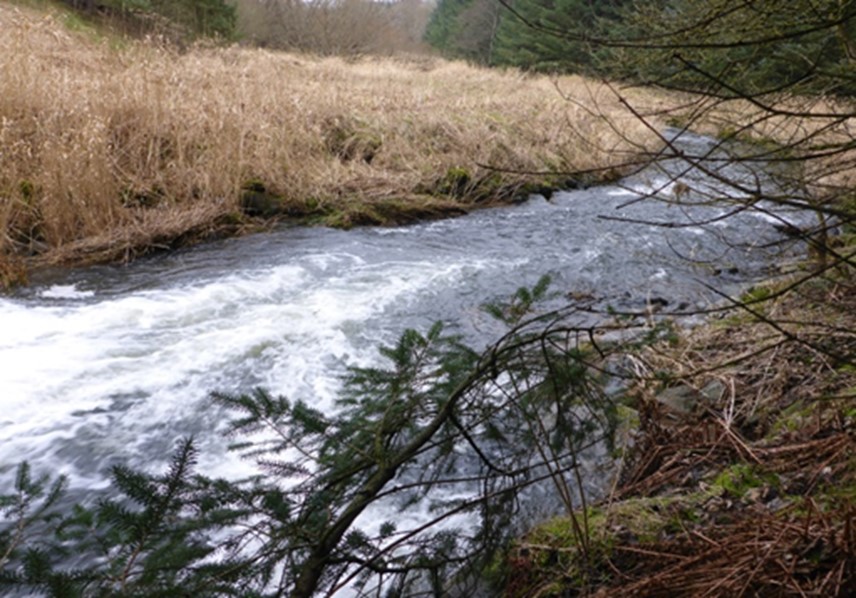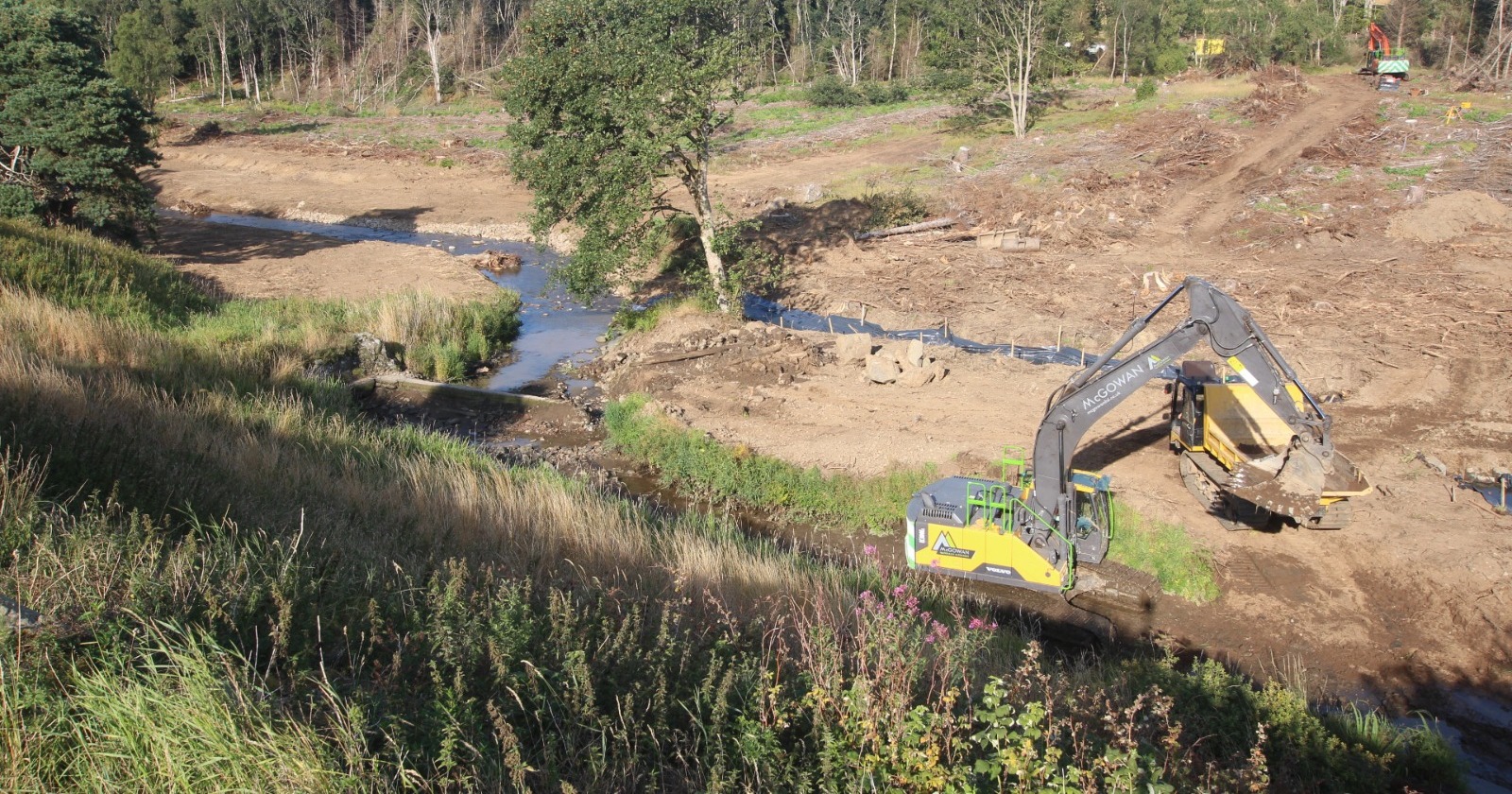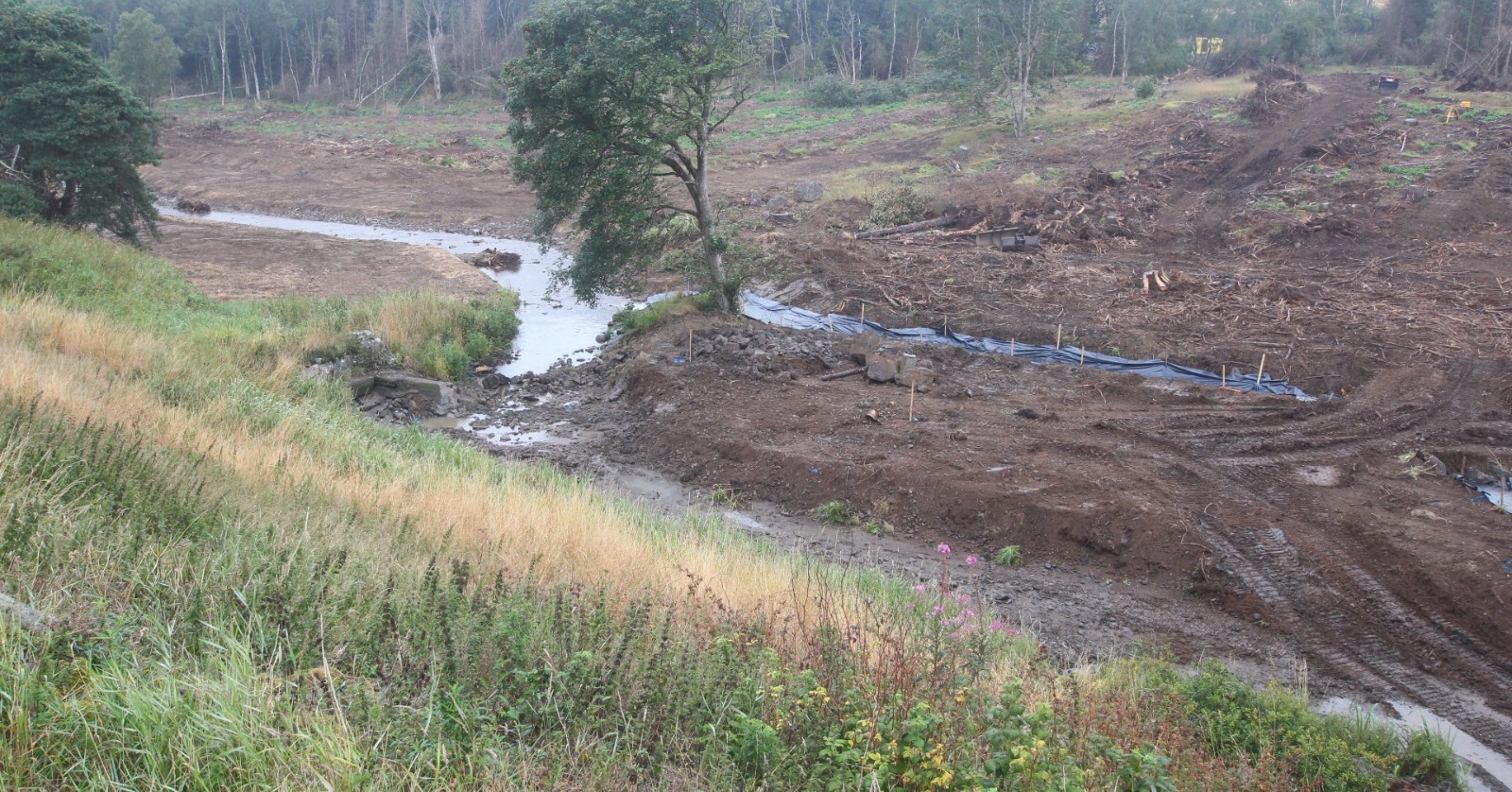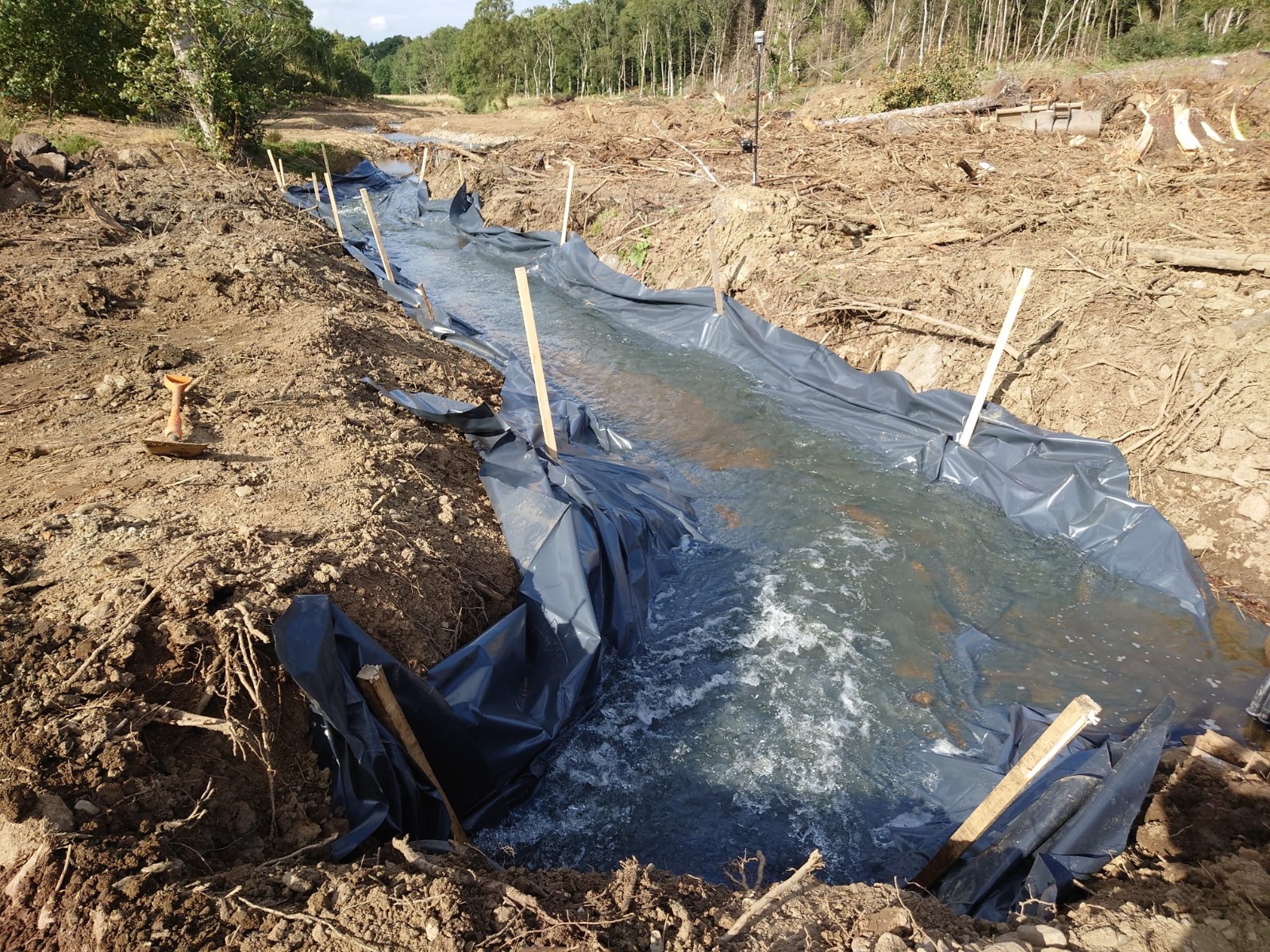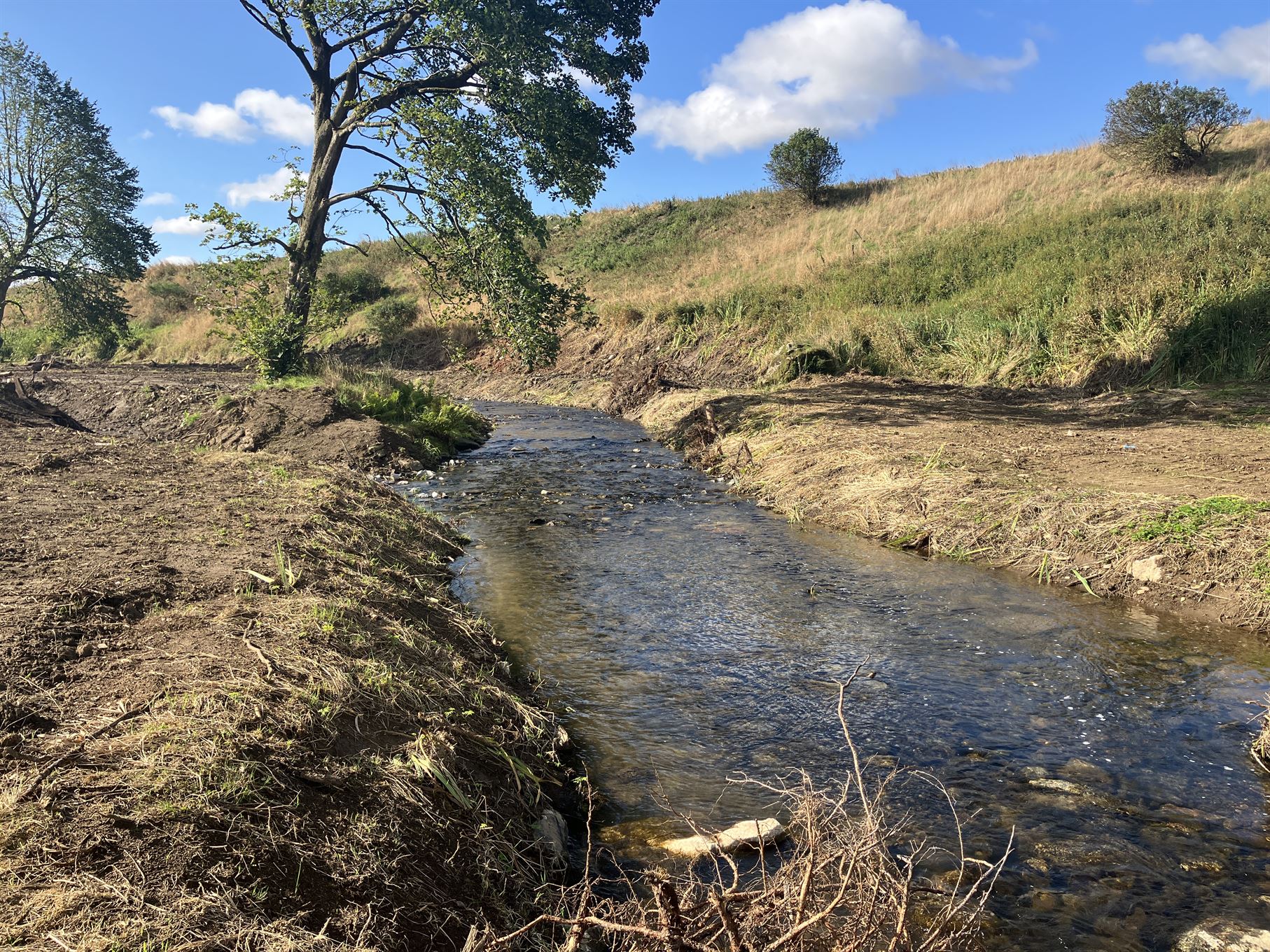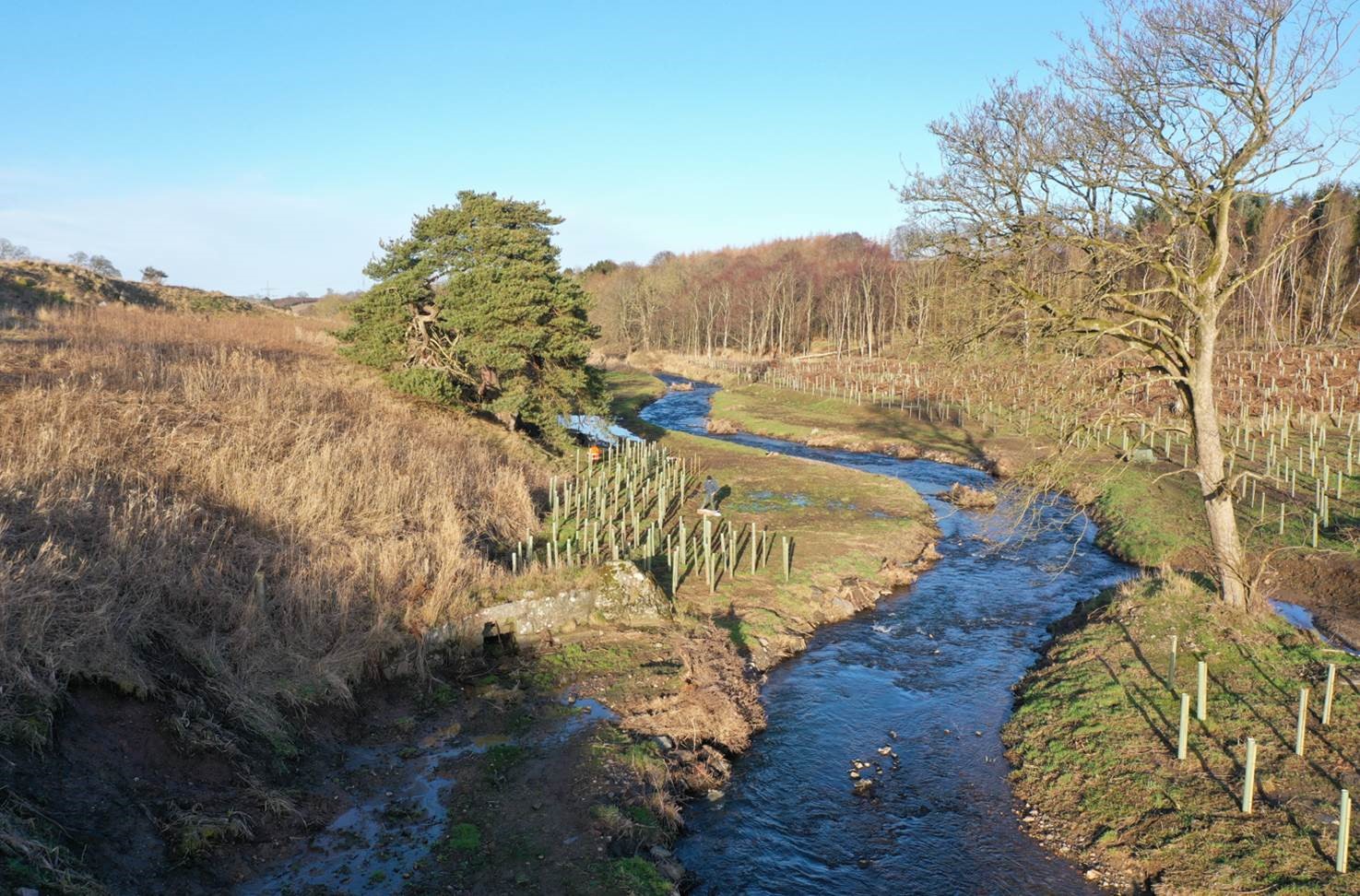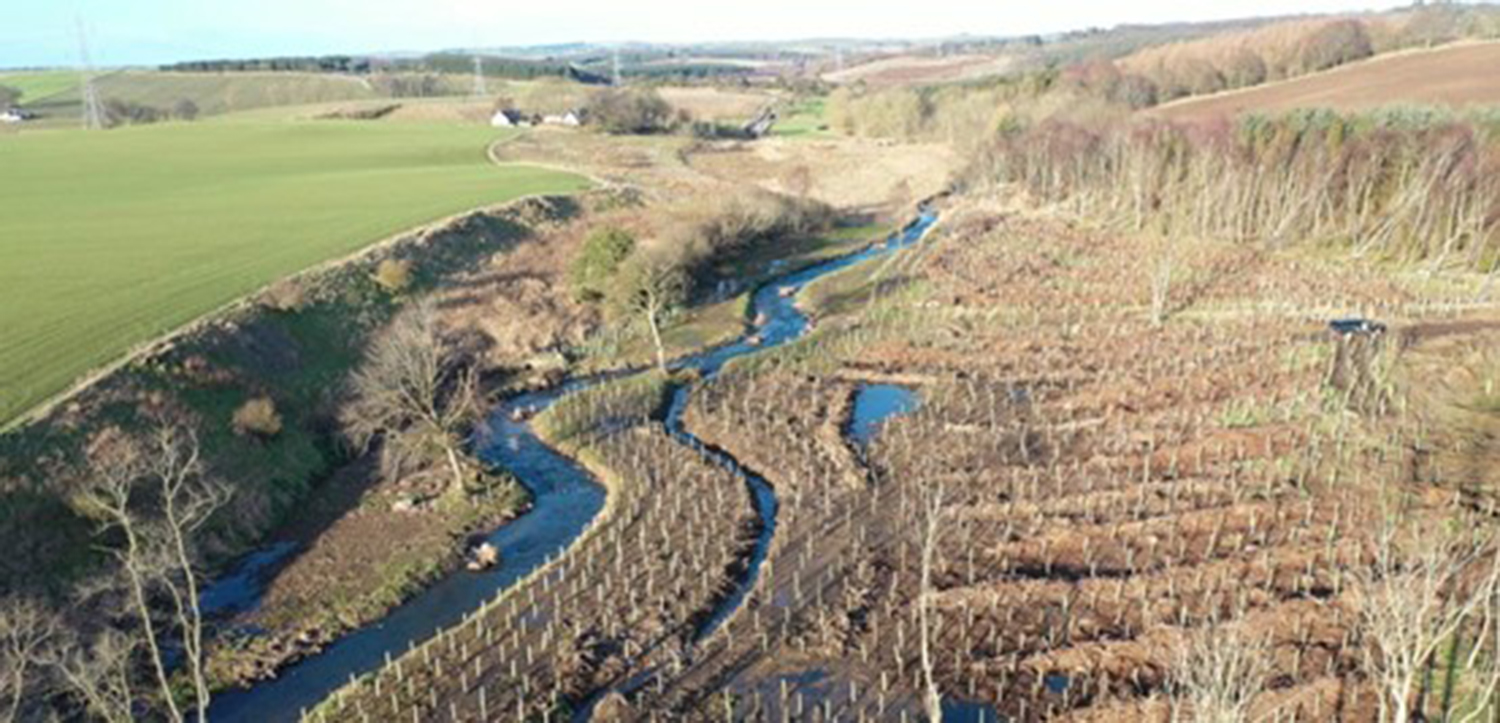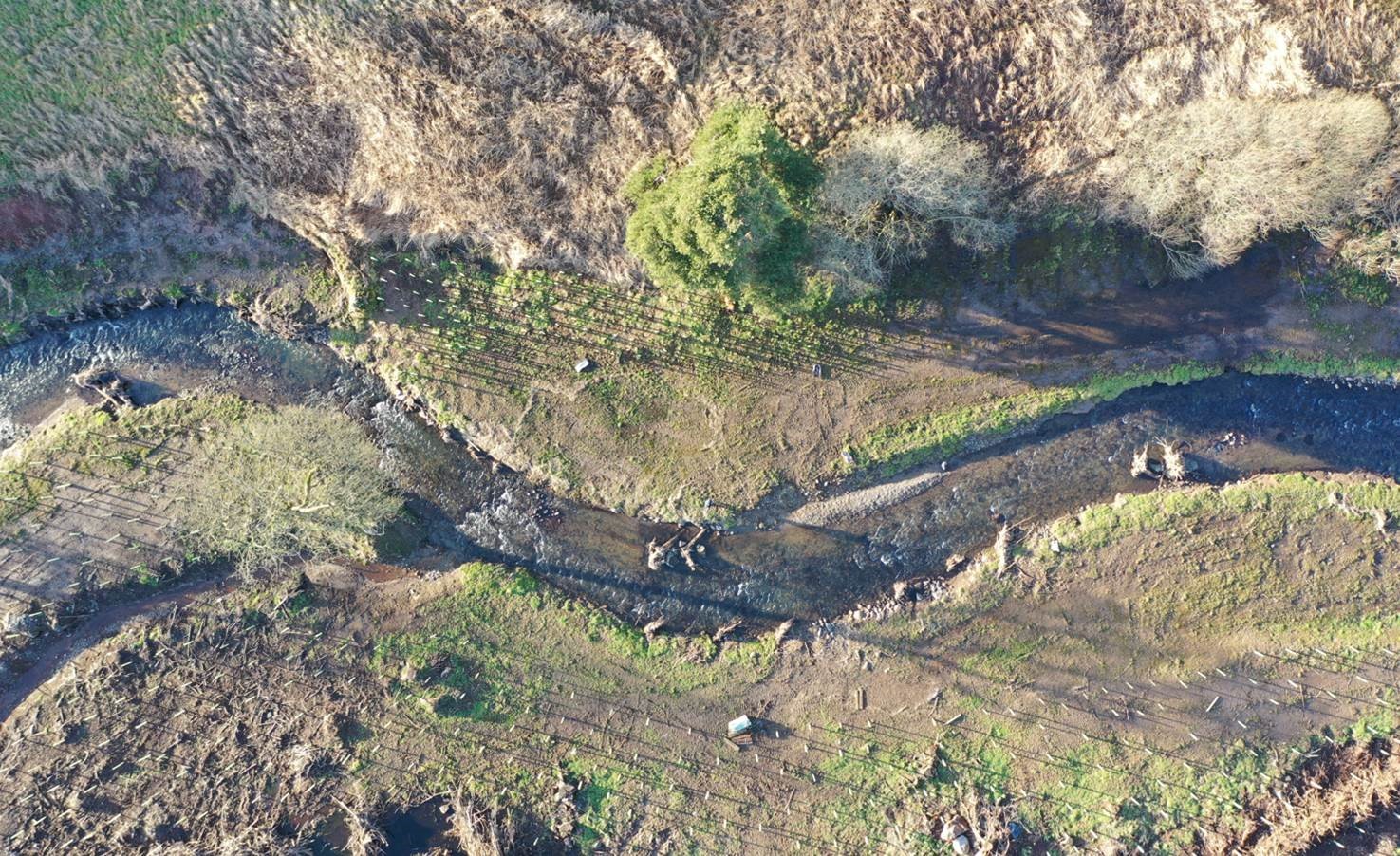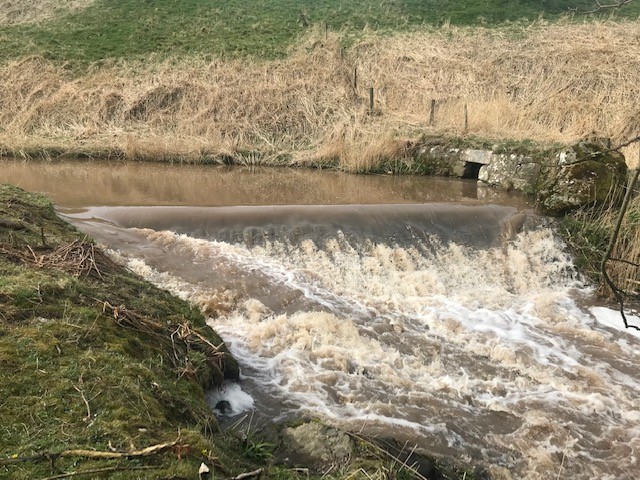Burn Weir removal opened 22 km of suitable habitat for fish migration and spawning
The Bronie Burn
Bronie Burn* runs close to Ellon, through Aberdeenshire in north-east Scotland and its overall length along with its tributaries is around 22 km (Figure 1). It is a tributary of River Ythan and is inhabited by several fish species, including Atlantic salmon (Salmo salar), Brown trout (Salmo trutta), European eel (Anguilla anguilla), Sea lamprey (Petromyzon marinus), River lamprey (Lampetra fluviatilis), Brook lamprey (Lampetra planeri) and Eurasian minnow (Phoxinus phoxinus). Otter (Lutra lutra) and badger (Meles meles) are also present on site with several mature broad-leaved trees with bat roost potential. Himalayan balsam (Impatiens glandulifera) and Monkey flower (Mimulus ringens), invasive non-native species, grow along the riverbanks of Bronie Burn.
* A large stream or a small river. The term is used in Scotland and England (especially Northeast England) and in parts of Ulster, Australia and New Zealand





